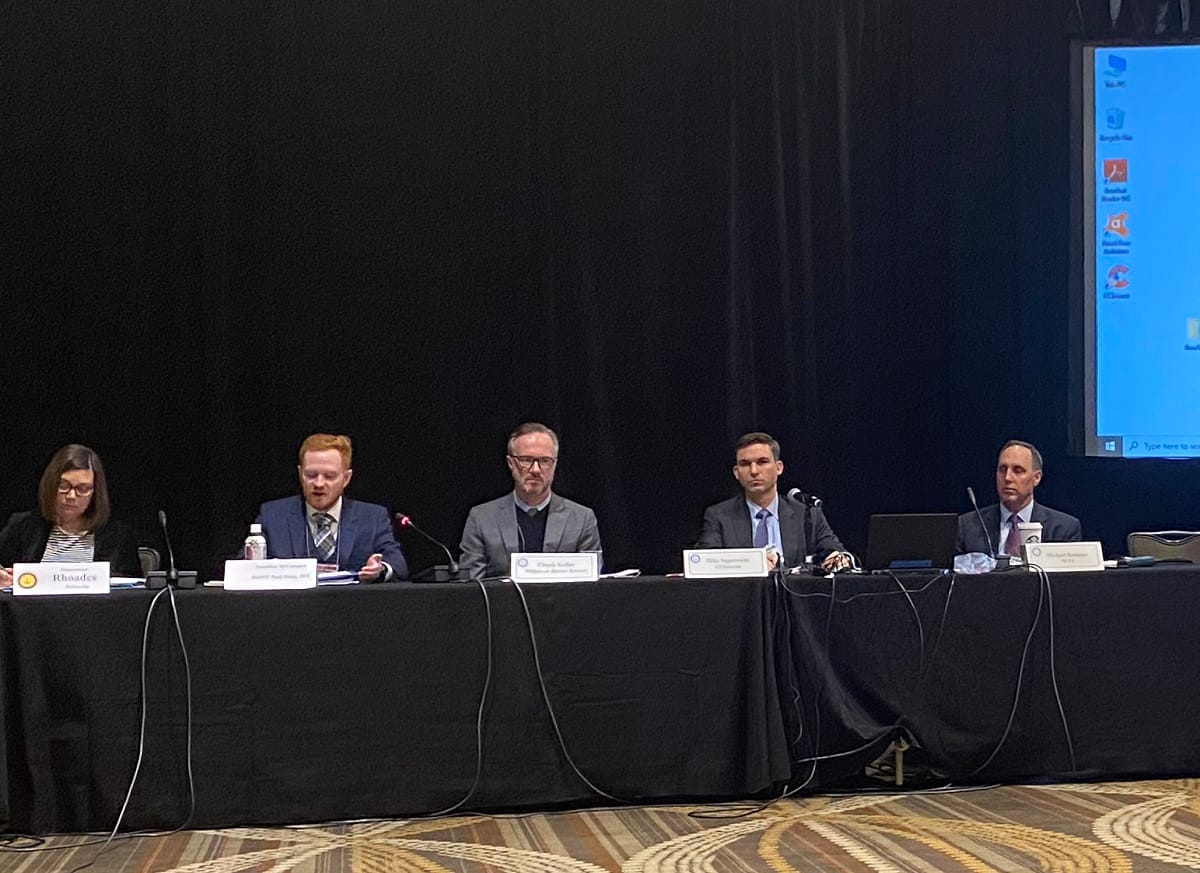Disagreements About Satellite Providers, Upload Speeds, Pepper Panelists Picking Apart Rural Broadband Fund
WASHINGTON, February 11, 2020 – A panelists on the new rural funding program at the National Association of Regulatory Utility Commissioners’ winter forum generated a start difference of view from two Washington insiders. US Telecom Law and Policy Vice President Mike Saperstein disagreed with fello

WASHINGTON, February 11, 2020 – A panelists on the new rural funding program at the National Association of Regulatory Utility Commissioners’ winter forum generated a start difference of view from two Washington insiders.
US Telecom Law and Policy Vice President Mike Saperstein disagreed with fellow panelist, Wilkinson Barker Knauer Partner Chuck Keller, and touted the Rural Digital Opportunity Fund, and everything the “FCC got right.”
Saperstein believes the FCC was correct in pushing for higher latency services, and that Earth-based providers should be prioritized. But Keller touted satellite providers’ role in offering broadband service and wished the FCC developed a more “nuanced” latency benchmark.
Keller believes some areas will be left out that might have received service under other latency guidelines.
Satellite providers fall short of providing a “robust fiber middle mile” that is possible through terrestrial service, said Saperstein. He also commended the letter of credit adjustment announced at the commission meeting last month.
Saperstein believes this change will save money and adds an incentive for timely buildout. He said many bidders would not have been able to access the amount of credit needed to participate in in the fund.
NTCA Industry Affairs and Business Development Senior Vice President Michael Romano argued with Saperstein’s complimentary review of the 50/5 Megabits per second (Mbps down/up) aspect of the rural fund. Romano said it should provide service for the next decade, and that 50/5 Mbps was a low goal for that timeframe.
Romano also voiced concerns about the 5 Mbps upload speed. “The internet is not just about streaming Netflix,” he said. He said that symmetrical speeds will be crucial for future broadband service.
The FCC made a last-minute change to the fund proposal when it expelled areas that receive state subsidies for broadband buildout. Romano said the FCC could have used this as an opportunity to allow bidders to “leverage” state and federal programs to get better broadband.
Romano also called for clarification as some areas have loans but not grants, meaning borrowers might qualify for the fund if the language was clearer.
Jonathan McCormack, a member of the Rural Digital Opportunity Fund task force, said the FCC is worried that if efforts are turned to fixing mapping, then broadband deployment will continue to be delayed instead of moving ahead.








